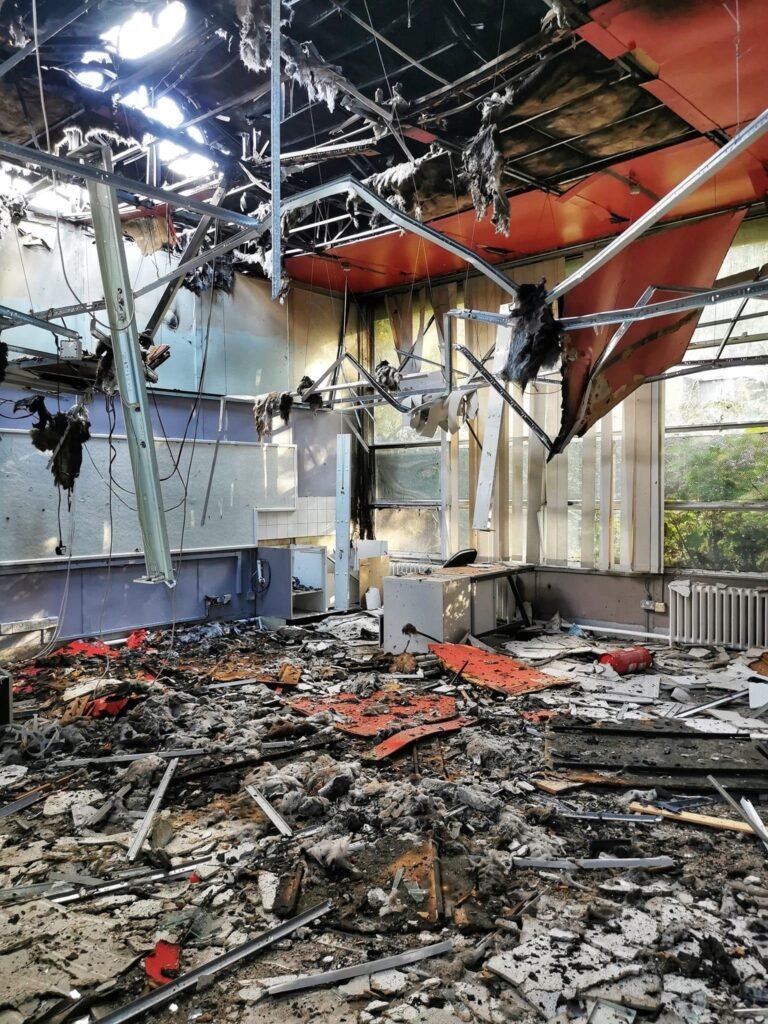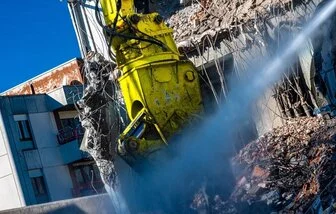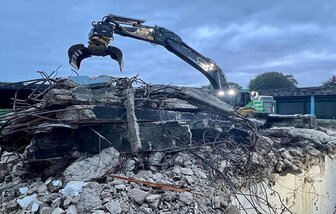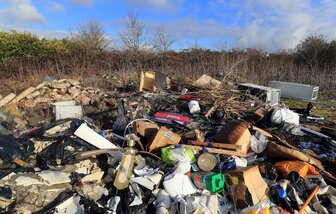Hazardous Waste in Demolition: How to Deal with Hazardous Liquids
Proper management of hazardous waste, particularly hazardous liquids, is of utmost importance during demolition projects. By following the guidelines set by the Environmental Agency UK, individuals and companies can ensure the safe handling, storage, and disposal of hazardous liquids, minimizing the potential risks to human health and the environment.
How to plan & manage hazardous waste
Learn how to deal with hazardous liquids in demolition projects. Understand the importance of identifying, segregating, and properly disposing of hazardous waste.
Follow the guidelines set by the Environmental Agency UK to ensure the safe handling, storage, and disposal of hazardous liquids, minimizing risks to human health and the environment.
Demolition projects involve the dismantling and removal of structures, which often generates various types of waste.
Among these, hazardous waste poses a significant environmental and health risk if not handled properly. In particular, hazardous liquids require special attention due to their potential for contamination and harm.

Hazardous waste refers to any waste material that poses a threat to human health or the environment. It can come in various forms, including liquids, solids, gases, or sludges. In the context of demolition, hazardous liquids commonly encountered include chemicals, oils, solvents, paints, and other substances that can be harmful if released into the environment.
The Environmental Agency UK defines hazardous waste as materials that exhibit specific properties such as toxicity, flammability, corrosiveness, or reactivity. These properties make them potentially harmful to human health, wildlife, and ecosystems if not managed and disposed of correctly.
When it comes to handling hazardous liquids during demolition projects, it is crucial to follow the guidelines set by the Environmental Agency UK. Here are some key steps to consider:
1. Identification and Segregation
The first step in dealing with hazardous liquids is to identify and segregate them from non-hazardous waste. This can be done by conducting a thorough assessment of the materials present on-site. Proper labeling and storage of hazardous liquids in clearly marked containers is essential to prevent accidental mixing or spills.
2. Safe Storage
Hazardous liquids should be stored in secure containers that are resistant to leaks or spills. These containers should be kept in designated areas away from sensitive environments, such as water bodies or areas prone to flooding. Storing hazardous liquids in a well-ventilated area can help minimize the risk of chemical vapors accumulating.
3. Proper Disposal
Disposing of hazardous liquids requires adherence to specific regulations and guidelines. The Environmental Agency UK provides detailed instructions on how to safely dispose of different types of hazardous waste. This may involve utilizing licensed waste management companies or treatment facilities that specialize in handling hazardous materials.
4. Reporting and Documentation
It is essential to maintain accurate records of the hazardous liquids generated during the demolition process. This includes documenting the types and quantities of waste produced, as well as any disposal or treatment methods employed. Keeping detailed records ensures compliance with environmental regulations and facilitates tracking of hazardous waste from cradle to grave.
The Environmental Agency UK has established regulations and guidelines to govern the handling, storage, and disposal of hazardous waste. These regulations aim to protect human health and the environment by minimizing the potential risks associated with hazardous liquids.
Some key regulations enforced by the Environmental Agency UK include:
- The Hazardous Waste Regulations
- The Control of Substances Hazardous to Health (COSHH) Regulations
- The Environmental Permitting Regulations
Compliance with these regulations is crucial for anyone involved in demolition projects that generate hazardous waste. Failure to comply can result in severe penalties and harm to the environment.
Hazardous waste is a significant concern in the United Kingdom, as it poses potential risks to human health and the environment. To mitigate these risks, the UK government has implemented the Hazardous Waste Regulations. These regulations aim to ensure the safe and proper management of hazardous waste throughout its lifecycle.
What is Hazardous Waste?
Hazardous waste refers to any waste that has properties or contains substances that make it harmful to human health or the environment. This waste can be in various forms, including solids, liquids, or gases. Examples of hazardous waste include chemicals, solvents, batteries, and contaminated soil.
The Purpose of the Hazardous Waste Regulations
The Hazardous Waste Regulations in the UK serve several essential purposes:
- Protecting human health and the environment from the potential risks associated with hazardous waste
- Promoting the sustainable management of hazardous waste
- Ensuring that hazardous waste is appropriately classified, handled, transported, and disposed of
- Preventing illegal dumping and the release of hazardous substances into the environment
Key Requirements of the Hazardous Waste Regulations
The Hazardous Waste Regulations impose specific obligations on waste producers, carriers, and waste management facilities. Some key requirements include:
- Waste Classification: Properly identifying and classifying hazardous waste is crucial. Waste producers must determine whether their waste falls under the hazardous waste category.
- Waste Management Hierarchy: The regulations promote the waste management hierarchy, which prioritizes waste prevention, reuse, recycling, and recovery over disposal.
- Waste Consignment Notes: When hazardous waste is transferred from one party to another, a waste consignment note must accompany the waste to provide essential information about its nature, origin, and destination.
- Registration: Waste carriers and waste management facilities must register with the appropriate environmental agency to ensure compliance with the regulations.
- Storage and Transport: Hazardous waste must be stored and transported in suitable containers and vehicles to prevent leaks, spills, or other accidents that could harm human health or the environment.
- Record Keeping: Proper documentation, including waste transfer notes and consignment notes, must be maintained by all parties involved in the management of hazardous waste.
- Disposal: Hazardous waste must be disposed of at authorized facilities capable of handling and treating such waste safely.
Enforcement and Penalties
The Hazardous Waste Regulations are enforced by the environmental agencies in the UK. These agencies have the power to inspect and investigate waste management operations to ensure compliance. Non-compliance with the regulations can result in penalties, including fines and imprisonment.
Conclusion
The Hazardous Waste Regulations in the UK play a crucial role in protecting human health and the environment from the potential risks associated with hazardous waste. By implementing proper waste management practices and adhering to the regulations, waste producers, carriers, and waste management facilities contribute to a safer and more sustainable future.
Introduction
In the United Kingdom, the Control of Substances Hazardous to Health (COSHH) Regulations play a vital role in protecting workers from exposure to hazardous substances. These regulations, introduced in 2002, require employers to assess and control the risks associated with hazardous substances in the workplace. In this article, we will provide an overview of the COSHH regulations, their objectives, and the responsibilities of employers and employees.
What are Hazardous Substances?
Hazardous substances, as defined by the COSHH regulations, include chemicals, products containing chemicals, fumes, dust, vapors, mists, gases, and biological agents that have the potential to cause harm to human health. Examples of hazardous substances commonly found in workplaces include solvents, paints, cleaning agents, and certain types of dust and fibers.
Objectives of COSHH Regulations
The primary objective of the COSHH regulations is to protect workers from the risks associated with hazardous substances. The regulations aim to prevent ill health, including occupational diseases, caused by exposure to these substances. Additionally, COSHH regulations seek to provide a framework for employers to control and manage the risks effectively.
Responsibilities of Employers
Under the COSHH regulations, employers have several key responsibilities to ensure the health and safety of their employees:
- Risk Assessment: Employers must conduct a thorough assessment of the risks associated with hazardous substances in the workplace. This assessment should identify the potential hazards, evaluate the level of exposure, and determine appropriate control measures.
- Control Measures: Employers are responsible for implementing control measures to prevent or minimize exposure to hazardous substances. These measures may include substituting hazardous substances with less harmful alternatives, using engineering controls such as ventilation systems, and providing personal protective equipment (PPE) where necessary.
- Information and Training: Employers must provide employees with relevant information and training regarding the risks associated with hazardous substances, as well as the control measures in place. This includes providing clear instructions on the safe handling, storage, and disposal of these substances.
- Monitoring and Health Surveillance: Employers should regularly monitor the effectiveness of control measures and conduct health surveillance where necessary. Health surveillance involves the systematic monitoring of workers’ health to detect any early signs of adverse effects from exposure to hazardous substances.
- Emergency Planning: Employers must have appropriate emergency plans in place to deal with incidents involving hazardous substances. This includes providing first aid facilities, ensuring the availability of spill kits, and establishing procedures for evacuations and decontamination.
Responsibilities of Employees
While employers have the primary responsibility for managing the risks associated with hazardous substances, employees also have a role to play in ensuring their own safety and the safety of others. Employees should:
- Follow the instructions and procedures provided by their employer regarding the safe handling and use of hazardous substances.
- Use any control measures, such as ventilation systems or personal protective equipment, provided by their employer.
- Report any concerns or incidents related to hazardous substances to their employer.
- Cooperate with their employer in the implementation of control measures and the monitoring of their health.
Conclusion
The COSHH regulations in the United Kingdom are designed to protect workers from the risks associated with hazardous substances in the workplace. By conducting risk assessments, implementing control measures, providing information and training, and monitoring health, employers can effectively manage these risks. It is also essential for employees to follow the instructions and procedures provided by their employer to ensure their own safety and the safety of their colleagues. By working together, employers and employees can create a safe and healthy working environment.
What is demolition?
The process involves Rotational hydraulic shears and rock-beakers attached to specialist excavators are also used to cut or break through wood, cut steel and crush concrete which reduces the structure to a rubble
Securing your demolition project
Implementing robust security measures, such as perimeter fencing, access control, signage, surveillance systems, and proper lighting, can significantly reduce the
Demolition hazards
If a demolition project is well planned the risks of injury and death can be minimised. It should be emphasised that the planning and execution of a demolition project should only be done by appropriately competent persons.
Notification of intended demolition Section 80
If your considering demolishing an existing building you will need to submit a demolition, Section 80 Notice together with your (RAMS) to your local authority according to section 80
Welfare facilities
Welfare facilities are an essential component of any demolition project. By providing suitable facilities, employers prioritize the well-being and safety of their workers, leading to increased
Demolition plant
Demolition plant is essential in the construction industry, as they ensure the safe and efficient removal of structures. By following strict guidelines and regulations, these plants prioritise safety, efficiency, and sustainability.
Utilities disconnection
Terminating utilities at the boundary is a critical step in the demolition process. It ensures the safety of the demolition crew and the surrounding environment, helps comply with regulations, prevents damage to utilities
Internal soft strip
Soft strip demolition is a crucial process that involves the removal of the internal structure of a building, making it ready for demolition or refurbishment. This process includes the careful removal of various materials.
Planning your demolition project
Learn how to create an effective demolition plan for your construction project. This comprehensive guide covers the key steps, including site assessment, hazard identification, safety measures, waste management, and more.
Managing asbestos
Learn about the dangers of asbestos, its different types, and where it can be found. Understand the health risks associated with asbestos exposure and the importance of proper testing and safe removal. Protect yourself and others from the harmful effects of asbestos.
Dealing with waste
Learn about waste management practices in demolition projects and the legal requirements that must be followed. Understand the types of demolition waste, effective waste management practices, and the laws and regulations governing waste management
Hazardous waste liquids
Hazardous liquids in demolition projects. Understand the importance of identifying, segregating, and properly disposing of hazardous waste. Follow the guidelines the safe handling, storage, and disposal of hazardous
Ready to start your project ?
Let's Work Together
Please complete the form below and someone from the Total team will be in touch.












